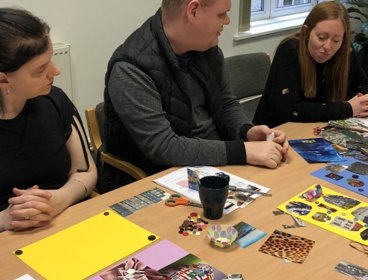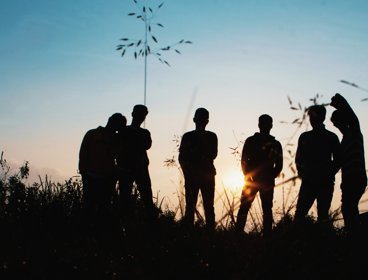By Andrew Power, University of Southampton
Seeking to understand how and where care operates is important to doing geography. Most of us will require care at some point in our lives. Small informal acts of care take place in our everyday life, with friends, family and neighbours, such as minding a neighbour’s pet, helping a friend needing a lift. For people with higher support needs, such as people with physical or learning disabilities, more formal care and support may be required. This can involve a complex array of different people and organisations, working across the informal, voluntary and statutory sectors, including volunteers, social workers, community health workers and advocates.
Doing geography then becomes important, because there is an opportunity for geographers to add a new dimension to our knowledge and understanding of how care takes place across space. The ‘geographies of care’ can help us understand the spaces of care between people, as well as the various community settings that people spend time in and what support they may need to access these spaces. It also allows us to understand the gaps and absences in care, and how these can disrupt people’s lives and reduce their access to public life. Finally, doing geography can prompt us to think of how care may change the meaning of spaces, such as the home becoming less of a private domain and more of a space of care or a workspace for the support staff.
I have used inclusive research methods, working closely with adults with learning disabilities to give them opportunities to tell their story of using social care, through photographs, co-produced maps of people and places, and schedules of a typical week. This allows me to find out how they take part in their communities, what barriers they face, and what networks of support they draw on. This gives people the ability to share rich insights into their lives and the spaces and places that they spend time at. For adults with learning disabilities, a key issue has been the withdrawal of formal statutory services. Social care policy has emphasised that support should no longer occur in day centres but out in the ‘community’. A geography lens therefore becomes important, as it allows us to understand how people navigate social care and what tactics people use to gain access to public life, such as developing peer-networks of support.
These methods have also allowed me to understand how residential care providers could better support residents to ‘feel at home’ in these settings. Giving residents cameras to document the spaces in the home that they like and don’t like, has provided a powerful means of revealing how space can be governed by support staff within these settings. It can reveal when certain care practices designed to ‘protect’ people can hinder and harm people’s lives, such as preventing people to take a greater role in tasks around the home or managing who and when people can visit. It also provides glimpses into what routines and practices can help to make people feel more at home, to help inform future support delivery and management of care settings.
Voluntary organisations also can play a pivotal role in helping people to find their way around the geographies of care and for plugging the ‘gaps’ in care. To understand the ‘big picture’ of how care operates across a region, I have used area-based case-studies, involving interviews with voluntary sector managers, local authority commissioners and disabled people across different locales. This has allowed me to understand how responsibilities for care are shaped and shared on a larger scale, as well as the experiences of support providers, and how they sustain their provision, often with limited available funding.
Some recommendations are to think about space as a network of flows between people, ideas, and power, rather than solely about the physical ‘bricks and mortar’ of places. This can help reveal the underlying relationships behind the patterns that we see and can give insights into why these patterns look and operate in the ways that they do. Try to envisage people’s ‘everyday geographies’, in terms of the spaces and places people use and occupy in their daily lives. Ask yourself where do people belong and have a sense of place? Do people feel at home in their community? What alternative communities might they occupy and feel part of? Addressing these questions can provide an important lens to understand how geography is real and felt in people’s lives.
Summary
-
Geography provides an important lens for understanding how care takes place across space and how it can change the very meaning of space between people.
-
Helping people to map their relationships and places can be a powerful tool used by geographers to understand the role of care and support underpinning their lives.
-
Doing geography can also reveal how care practices in some cases can hinder the places that people use and occupy and unlock conversations about how care could be provided differently.
How to cite
Power, A. (2023) Geographies of care. Working with voluntary and community groups. Royal Geographical Society (with IBG) Guide. Available at: https://doi.org/10.55203/JRGY4054
About this guide
Working with voluntary and community organisations for some is a very important way to do geography. These organisation come in various shapes and sizes and may also often be referred to as the third sector, the voluntary sector, not-for-profit organisations, community groups or the civic sector. In this guide, we share the experiences of researchers doing geography in collaboration with community and voluntary organisations. A range of topics and issues are explored from health, disability and care, through to austerity, violence, and craft, amongst others. We learn about the approaches taken by geographers in their work with community and voluntary organisations, and some of the challenges they have negotiated in the process.



